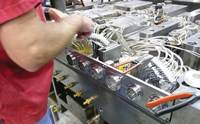Benefits of a Tooling Audit or Tooling Evaluation
Tooling Transfers
Why would an OEM benefit from a tooling audit or a tooling evaluation? Being pro-active when it comes to mold tooling pays dividends. Even with the best of intentions, a solid maintenance program and the ability to react to mechanical breakdowns, tooling with a lot of miles on it becomes a cost and a risk to supply. Performing an audit or evaluation up front provides a snap-shot of what you’re dealing with, and is always preferable to picking up the pieces later on.
Off-site tooling is out of sight, and therefore intangible— rarely considered unless there’s a supply chain interruption. The expectation is that vendors will be vigilant about maintenance and repair, and typically they are, often going overboard in an effort to shorten cycle times, and reduce down time. That said, we can depend on a vendor to keep the tooling running, but an OEM has a greater interest and insight into product life-cycle, acquisition or tooling transfer activity /intent, and budget forecasting that make it an imperative to understand exactly what they have, where it is, and what condition it’s in?
So what is a tooling audit? Going beyond asset value and depreciation, the purpose of a tooling audit is to create a central repository of tooling related information that translates across all departments of the OEM. Planning, purchasing, engineering, operations, QC, and finance all have a stake when tooling is transferred or acquired, but each have a different interest. By capturing the essential mold tool hardware (tool classification, age, number of cycles, cavitation and physical parameters), press size and type, peripheral equipment, spares, material designations, inspection techniques, documentation, performance attributes and all relative intelligence prior to a vendor to vendor tooling transfer (or immediately before or after an acquisition), an OEM now has visibility over the entire tooling inventory, and can plan and prioritize according to inventory needs and resources.
What’s the benefit? All OEM departments now share a common source, enabling data based decision making, and dramatically reducing the number of meetings and participants necessary to gather and exchange information.
By capturing and sharing the data up front, the new supplier has the vital information that takes the guesswork out of initial start up and qualification of transfer tooling, shortening the ramp-up time significantly.
A tooling evaluation differs from a tooling audit, and is designed to capture current tool condition and performance concerns that will enable action to address high scrap rates, mechanical breakdowns, and supply chain interruptions, allowing an OEM to preempt issues, understand risk exposure, and plan accordingly, and will often provide the justification to support capital appropriation and ROI for replacement tooling where risk exists.
Beyond a bench evaluation, a tooling evaluation is an overview of what the tool is producing (output and quality), how the tool is currently performing (is it in the maintenance shop every other week?) and whether it is sustainable (is it showing signs of age beyond normal wear and tear?).
A typical OEM owns 50 to 500 off-site mold tools that run constantly, with suppliers that run the gamut from a mom and pop shops to a top tier molder. These tools get regular routine maintenance, but now they've got upwards of a million cycles on them, (like a car with 300,000 miles), longevity and risk come into the equation. Demand is constant, really pushing the tooling inventory to the limit, but is regular maintenance enough to make the tools last indefinitely? A tooling evaluation will highlight and expose fatigue, extreme wear items, damage, and blocked cavities, providing key feedback that will determine whether the tooling is sustainable.
Each of these procedures has a purpose, but when combined, a tooling audit (what have we got?), and a tooling evaluation (what condition is it in?), provide an OEM with a truly global perspective of their entire tooling inventory.
Contributor:
Paul Mulville is the owner of Tooling Transfers.
For More Information
Tooling Transfers / toolingtransfers.com
Related Content
Tackling a Mold Designer Shortage
Survey findings reveal a shortage of skilled mold designers and engineers in the moldmaking community, calling for intervention through educational programs and exploration of training alternatives while seeking input from those who have addressed the issue successfully.
Read MoreThe Trifecta of Competitive Toolmaking
Process, technology and people form the foundations of the business philosophy in place at Eifel Mold & Engineering.
Read MoreMaking Mentoring Work | MMT Chat Part 2
Three of the TK Mold and Engineering team in Romeo, Michigan join me for Part 2 of this MMT Chat on mentorship by sharing how the AMBA’s Meet a Mentor Program works, lessons learned (and applied) and the way your shop can join this effort.
Read MoreMaking Quick and Easy Kaizen Work for Your Shop
Within each person is unlimited creative potential to improve shop operations.
Read MoreRead Next
Tooling Transfer: Sampling Success
Fifteen steps to facilitate a smooth tool transfer between the OEM, new molder and your shop.
Read MoreHow to Use Continuing Education to Remain Competitive in Moldmaking
Continued training helps moldmakers make tooling decisions and properly use the latest cutting tool to efficiently machine high-quality molds.
Read MoreHow to Use Strategic Planning Tools, Data to Manage the Human Side of Business
Q&A with Marion Wells, MMT EAB member and founder of Human Asset Management.
Read More





















